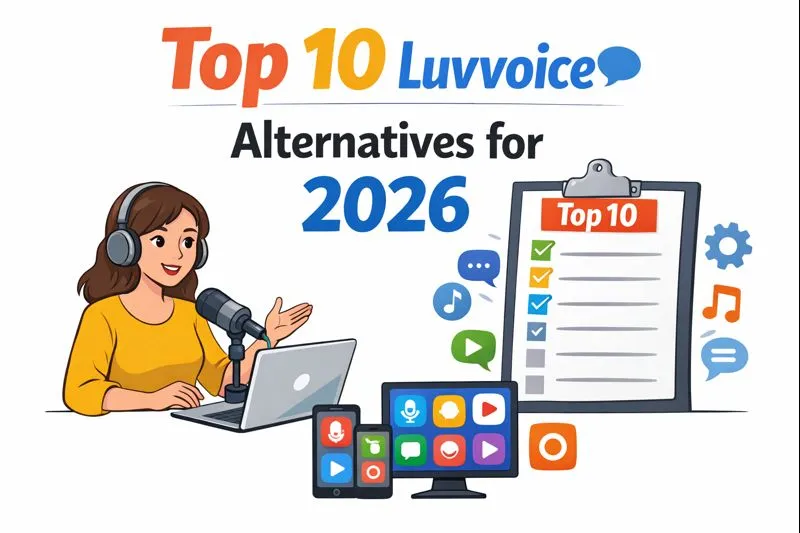Lifelike Text-to-Speech Technology: An Overview
TL;DR
Introduction to Image Upscaling
Okay, so you got a picture that's, like, tiny, but you need it BIG. We've all been there, right? That's where image upscaling comes in. It's not just about making the picture bigger, though. It's about trying to make it look good while you're at it.
- Print's the thing: Want to print a photo poster-size? Upscaling is a must. Otherwise, it'll look super pixelated, and nobody wants that.
- Details, details: Ever look at a photo on a huge 4k screen and it looks...meh? Upscaling can help sharpen things up for better viewing.
- Old photos: Got those old family photos that are the size of a postage stamp? Upscaling can breathe some new life into them, making them viewable (even if they're not perfect).
Upscaling isn't magic. You're basically asking the computer to guess what details should be there. This can cause problems, like:
- Pixel party: Making pixels bigger without adding info just makes the pixelation worse.
- Detail drain: The computer might not guess right, so fine details can get lost in the process.
- Sharpness struggle: It's a balancing act between making the image sharp and making it look unnaturally smooth, you know?
Ai image upscalers are all over the place. While some claim to be the best, it's worth exploring what they can do. They can enhance images to resolutions that were previously unimaginable.
Next up, we'll dive into the different methods for tackling this upscaling challenge, starting with the tried-and-true traditional approaches.
Traditional Image Upscaling Methods
So, you wanna make that tiny picture HUGE, huh? Well, before ai came along and stole the show, we had these, uh, traditional methods. They're not as fancy, but they're still around and kicking, especially when you need a quick, simple resize or when processing power is limited.
These methods? They're basically about guessing what those missing pixels should look like. It's like filling in the blanks, but with math. Here's the lowdown:
- Bilinear Interpolation: Think of it as the "blur-it-till-it-looks-okay" method. It's fast, but it can make images look kinda soft, losing sharpness.
- Bicubic Interpolation: A step up from bilinear. Tries to preserve details a bit better, so you don't get quite as much blur. Still, its limited to what's already there, if you catch my drift.
- Lanczos Resampling: This one can give you sharper results, which is cool. But, uh, it can also introduce weird artifacts if you're not careful. So, you gotta tweak the settings right.
These methods are still useful for basic resizing tasks where speed is more important than intricate detail preservation. Next, we'll see how these traditional methods compare to the new wave of ai upscaling.
AI-Powered Image Upscaling: A New Era
Okay, so, remember those old sci-fi movies where they could zoom in forever on a picture? Well, ai upscaling is kinda like that, but, ya know, real. It's not magic, but it's close.
Machine learning's the brain: Ai upscaling uses these fancy algorithms that learn from tons of images. Think of it as showing a computer a million pictures of cats so it knows what a cat should look like, even if the original photo is, like, a blurry mess.
Datasets are key: It's all about the data. The more high-resolution images an AI is trained on, the better it gets at guessing what details are missing. It's like, the better your study material, the better you will perform on the exam.
Patterns emerge: The AI figures out patterns in images – like how textures usually look, or the way light reflects. Then, it uses those patterns to create new details that weren't there before. This way we can create stunning visual experiences.
Details, preserved: Unlike traditional methods that often blur details or introduce artifacts, AI tries to intelligently reconstruct and sharpen them, keeping the image crisp.
Bye-bye, artifacts: Remember those weird squares and glitches you'd get with traditional upscaling? AI is far better at reducing those, making the final image look much more natural and less "processed."
Optimization is automatic: Many AI upscalers offer automatic optimization, simplifying the process by intelligently determining the best settings. However, some advanced tools still allow for fine-tuning of parameters to achieve specific results. This saves you a ton of time compared to manual adjustments.
So, what tools are out there? Aiarty Image Upscaler is one option that's been noted for its capabilities.
Next up, we'll see how these AI methods stack up against the traditional ones.
Comparing AI and Traditional Methods
Okay, so you're wondering which is better, ai or the old ways? It's like asking if a fancy new digital camera is better than your grandpa's film camera – depends what you're after, right?
- AI's the detail champ: AI upscaling is seriously good at bringing back details you thought were GONE. Unlike traditional methods that can lose information, AI reconstructs it, which is crucial for things like medical imaging; that extra clarity could be life-saving, you know?
- Traditional's... kinda blurry: The old methods can leave your images looking soft, or even just plain weird. It's like when you try to zoom in too much on a photo on your phone—yikes. AI, on the other hand, aims to create new, plausible details.
- Speed vs. wow factor: Traditional methods are usually quicker, no lie. But ai? It takes its time to work it's magic, specially with larger images, but the quality payoff is usually worth the wait.
So, yeah, ai often wins on quality, but the classics are faster. Next, we'll talk about how to pick the right method for your specific needs.
Choosing the Right Method for Your Needs
Okay, so you're down to picking a method. It's not always clear cut, ya know? Different pictures have different needs.
- Image Type: Portraits? Landscapes? Scans of old documents? Each benefits differently from ai or older methods. For instance, portraits might need the ai touch to really bring out facial details.
- Output Size Matters: Are we talking a little tweak or blowing it up poster-sized? Small bumps, traditional methods might do the trick. For massive enlargements, AI is usually the way to go.
- Time is Money, right?: Ai is cool, but it can take a while. If you need something fast, the classics are quicker.
- Budget: Some ai tools cost money for a subscription or a one-time purchase, while traditional methods are often built into basic software for free. Consider the cost of software, subscription fees, or the value of the time saved with more automated AI tools.
Sometimes, simple is better. If you just need a quick preview or a small adjustment, bilinear or bicubic is just fine.
Got a seriously damaged photo? AI's restoration capabilities can be a game-changer. Plus, for those huge projects where every pixel counts, ai is the way to go. Now, let's move on to some best practices for upscaling.
Best Practices for Image Upscaling
Ever taken a picture that just needed to be bigger? I mean, who hasn't, right? But before you just crank up the size, hold up a sec – there's a few tricks to getting it right.
- Start fresh: Don't upscale something that's already a blurry mess. It's like trying to polish a turd, ya know? Instead, always try to start with the highest quality original image you can find. It makes a difference.
- Raw power: If you got a fancy camera that shoots in RAW format, use that file. It's got way more info than a regular jpeg, giving the ai more to work with.
- Clean it up: Before you upscale, take a sec to remove any obvious noise or imperfections. Think of it as prepping your canvas before painting.
Next up, let's explore some of the tools that can help you get the job done.
Tools and Software for Image Upscaling
Alright, so you're ready to dive in. There's a bunch of tools out there, some free, some not, some simple, some complicated. Here's a look at what's available:
- Free & Built-in: Most image editing software, like GIMP or even your operating system's built-in photo viewer, has basic resizing options using traditional methods like bilinear or bicubic interpolation. These are great for quick, no-fuss enlargements.
- Dedicated AI Upscalers: This is where things get interesting. Tools like Aiarty Image Upscaler are designed specifically for AI-powered enhancement. They often offer more advanced features and better results, though they might come with a cost or a learning curve.
- Online Tools: There are also web-based AI upscalers that let you upload an image and get it processed without installing any software. These are super convenient for occasional use.
When choosing, think about how often you'll be upscaling, the quality you need, and your budget.
Conclusion
So, what's next for image upscaling? Well, it's not gonna stand still, that's for sure, and it's already pretty mind blowing!
- AI is just gonna get better: The algorithms are improving at a crazy pace. Expect even more impressive results, like, next year maybe?
- More than meets the eye: AI upscaling isn't just for making pictures bigger. It's gonna be used to pull out hidden details in medical scans, allowing for earlier diagnosis, enhance security footage, making it easier to identify individuals or objects, and even restore old, damaged photographs. It's all sorts of stuff.
- Ethics matter, though: We gotta think about where this tech is going. Is it okay to "create" details that weren't really there? Something to think about, ya know?





